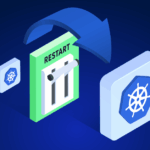
Never crash again: Immediate actions to manage cloud traffic spikes
As a FinOps professional, I understand how sudden cloud workload spikes can disrupt your infrastructure, inflate costs, and impact customer satisfaction. These challenges can be overwhelming, but with the right strategies, you can tackle them efficiently. Having worked with numerous companies facing similar issues, I’ve seen firsthand how effective solutions can transform operations. Here are 6 easy-to-implement solutions you can apply today to ensure your infrastructure is scalable and can handle unexpected traffic spikes.
1. Activate auto scaling
Auto scaling dynamically adjusts your cloud resources in real-time based on demand, maintaining optimal performance and ensuring your infrastructure scales as needed.
2. Use container orchestration
Platforms like Kubernetes can enhance scalability by orchestrating containers that run your applications. Containers can be started or stopped quickly in response to demand changes, allowing your infrastructure to scale effectively.
3. Implement load balancing
Load balancing distributes incoming network traffic across multiple servers to ensure no single server becomes overwhelmed. This technique improves the availability and reliability of your application, ensuring it can handle sudden increases in traffic.
4. Implement a content delivery network (CDN)
A CDN distributes your content across multiple servers worldwide, reducing the load on your main infrastructure and improving scalability.
5. Leverage spot instances smartly
Spot instances offer a cost-effective solution to tackle workload spikes. While cheaper than on-demand instances, they can be terminated by the cloud provider when demand spikes. Using spot instances for non-critical workloads can achieve significant cost savings while maintaining the ability to scale critical services.
6. Utilize serverless architectures
Serverless computing allows you to run applications without managing the underlying infrastructure. Functions automatically scale up or down based on demand, effectively handling traffic spikes.
Turn cloud workload spikes into manageable tasks
Handling cloud workload spikes can be stressful. However, by leveraging auto scaling, using container orchestration, implementing load balancing, using a CDN, leveraging spot instances, and utilizing serverless architectures, you can ensure your infrastructure is scalable and can handle unexpected traffic spikes promptly and with financial prudence.
Act swiftly. Implement these strategies to maintain system performance and keep costs in check. You’ve got this—turn cloud workload spikes from a challenge into a manageable task. Keep pushing forward, and you’re bound to see tremendous results.
FAQ
How quickly can auto scaling respond to traffic spikes?
Auto scaling can respond to traffic spikes within minutes. It continuously monitors resource usage and automatically adjusts capacity based on predefined thresholds, ensuring your infrastructure scales quickly to meet demand.
What are the potential risks of using spot instances for critical workloads?
While spot instances are cost-effective, they can be terminated by the cloud provider with little notice. This makes them unsuitable for critical workloads that require high availability. It’s best to use spot instances for non-critical tasks where interruptions are acceptable.
Can I use multiple CDN providers for better performance?
Yes, using multiple CDN providers can enhance performance and reliability. By distributing traffic across different CDNs, you can reduce latency, improve load times, and ensure better redundancy in case one provider experiences issues.
How does serverless architecture handle sudden surges in demand?
Serverless architectures automatically scale up the number of function instances in response to demand. This means that when a surge occurs, additional instances are created to handle the load, ensuring smooth operation without manual intervention.
What monitoring tools can help manage these strategies effectively?
Tools like AWS CloudWatch, Google Cloud Monitoring, and Azure Monitor provide comprehensive monitoring and alerting capabilities. They help you track resource usage, performance metrics, and potential issues, allowing you to manage auto scaling, container orchestration, CDNs, spot instances, and serverless functions effectively.
https://youtu.be/eSutaPE80PM
How can I ensure my infrastructure remains secure while scaling?
Ensure your scaling strategies include robust security measures such as automated security patches, compliance checks, and encryption. Regularly audit your security policies and use tools like AWS Security Hub, Azure Security Center, and Google Cloud Security Command Center to maintain security while scaling.








